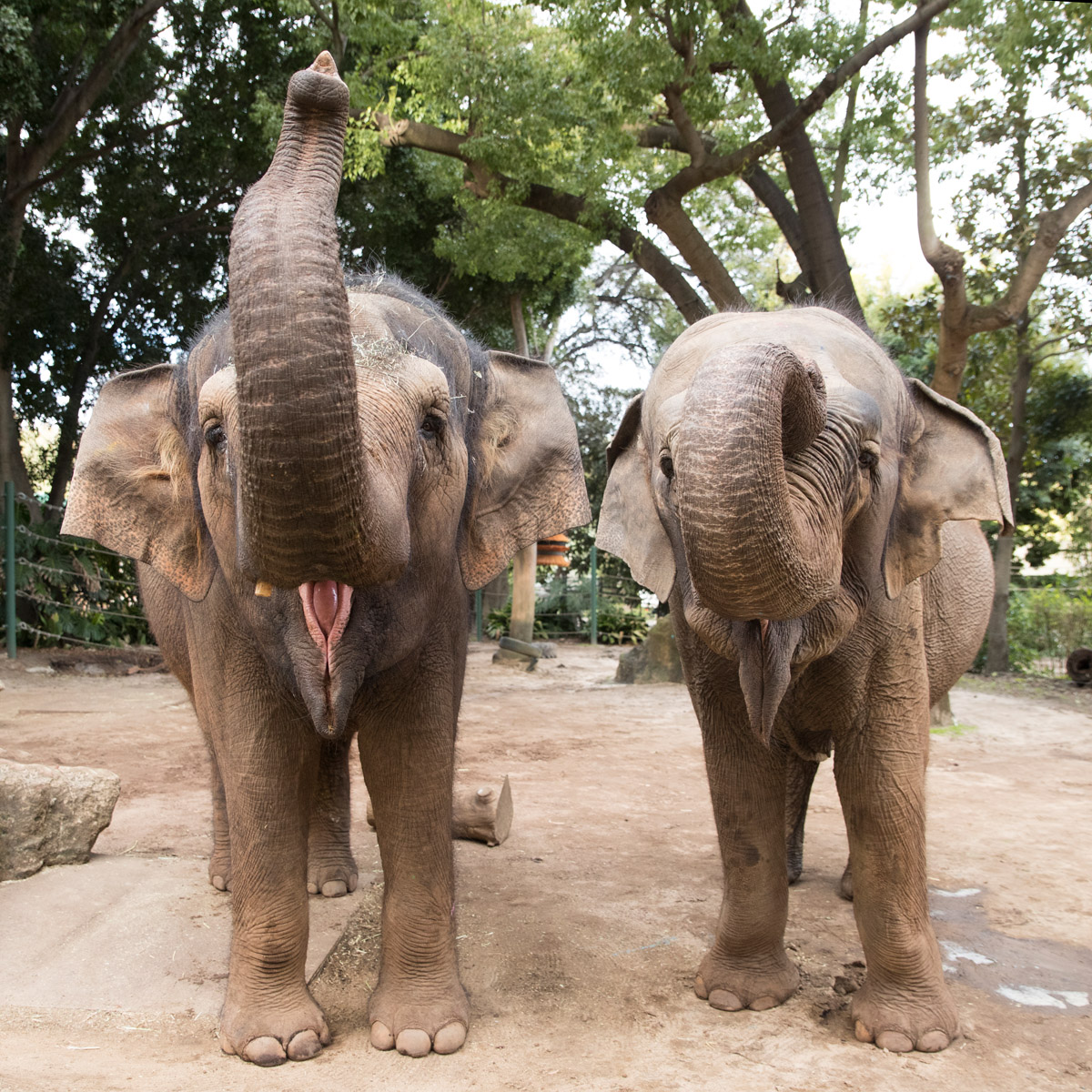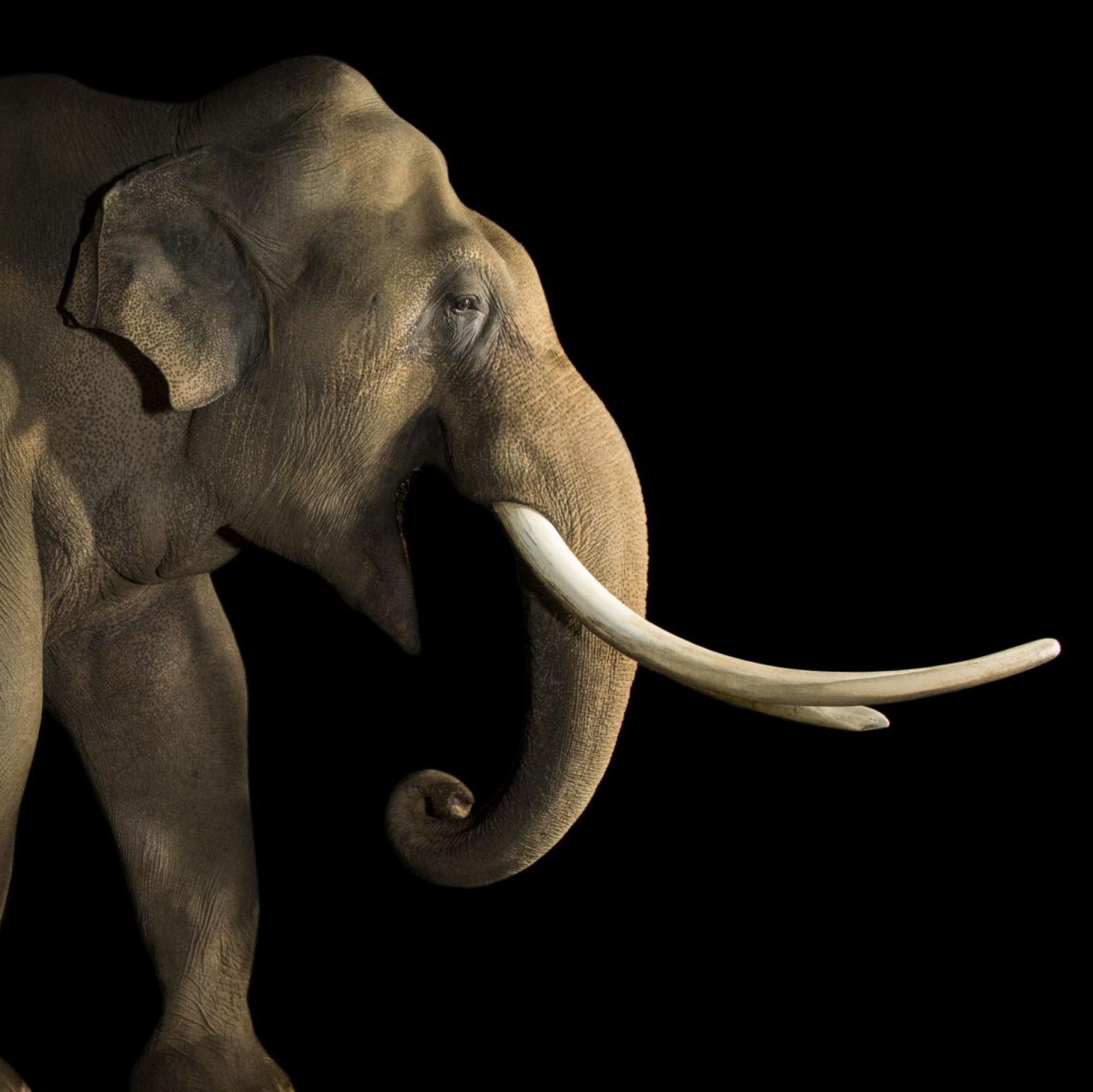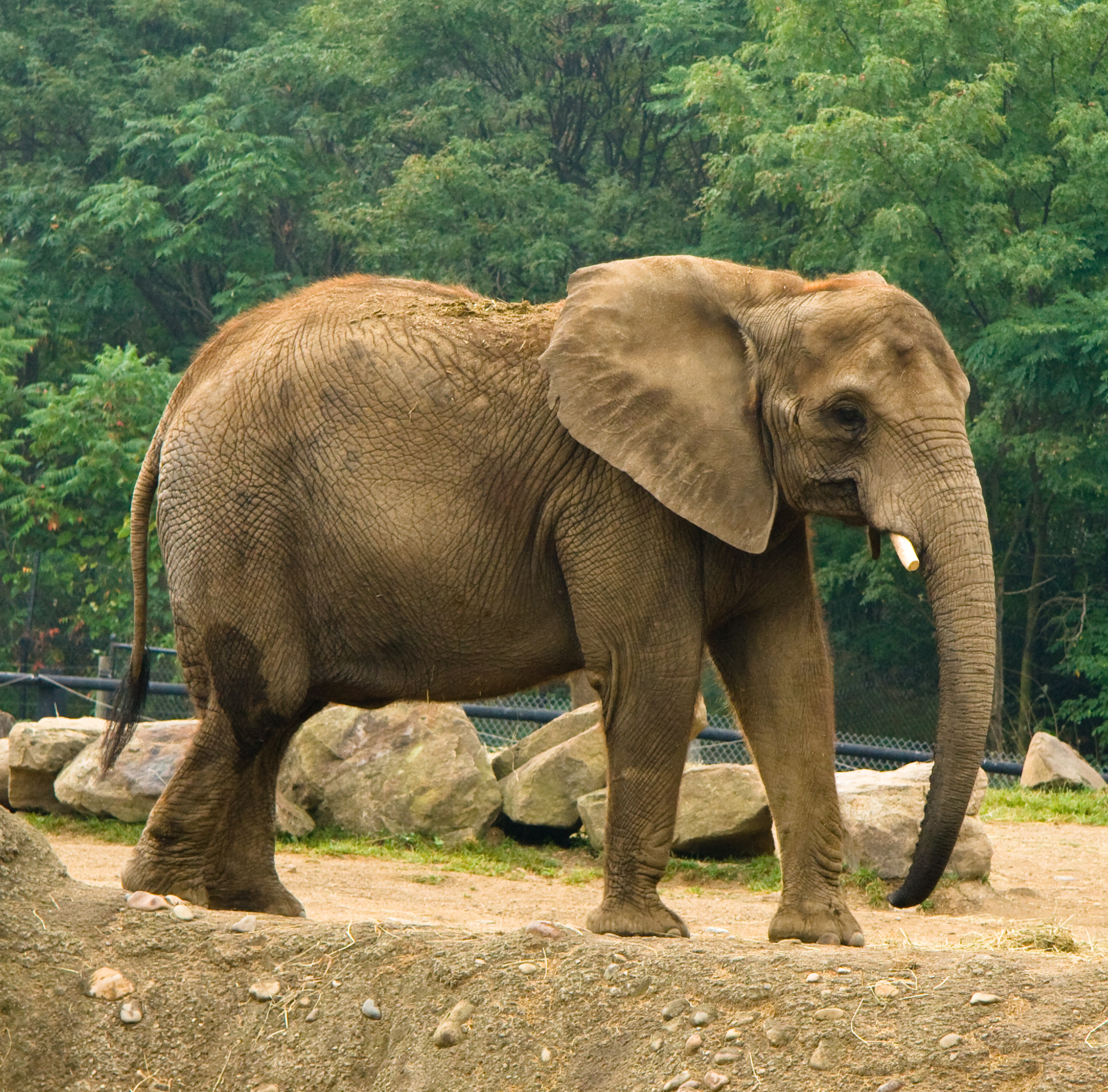THE ASIAN ELEPHANT
Background
Asian elephants are the continent's largest terrestrial mammals. They can reach 6.4m in length and 3m at the shoulder, and weigh as much as 5 tonnes. They are smaller than African elephants and have proportionally smaller ears, which they keep in constant motion in order to cool themselves. They also have a single 'finger' on the upper lip of their trunks as opposed to African elephants, which have a second one on the lower tip.

Their skin ranges from dark grey to brown, with patches of pink on the forehead, the ears, the base of the trunk and the chest.A significant number of male Asian elephants are tuskless. The percentage of males with ivory varies from just 5% in Sri Lanka to aound 90% in southern India - possibly reflecting the intensity of past ivory hunting.
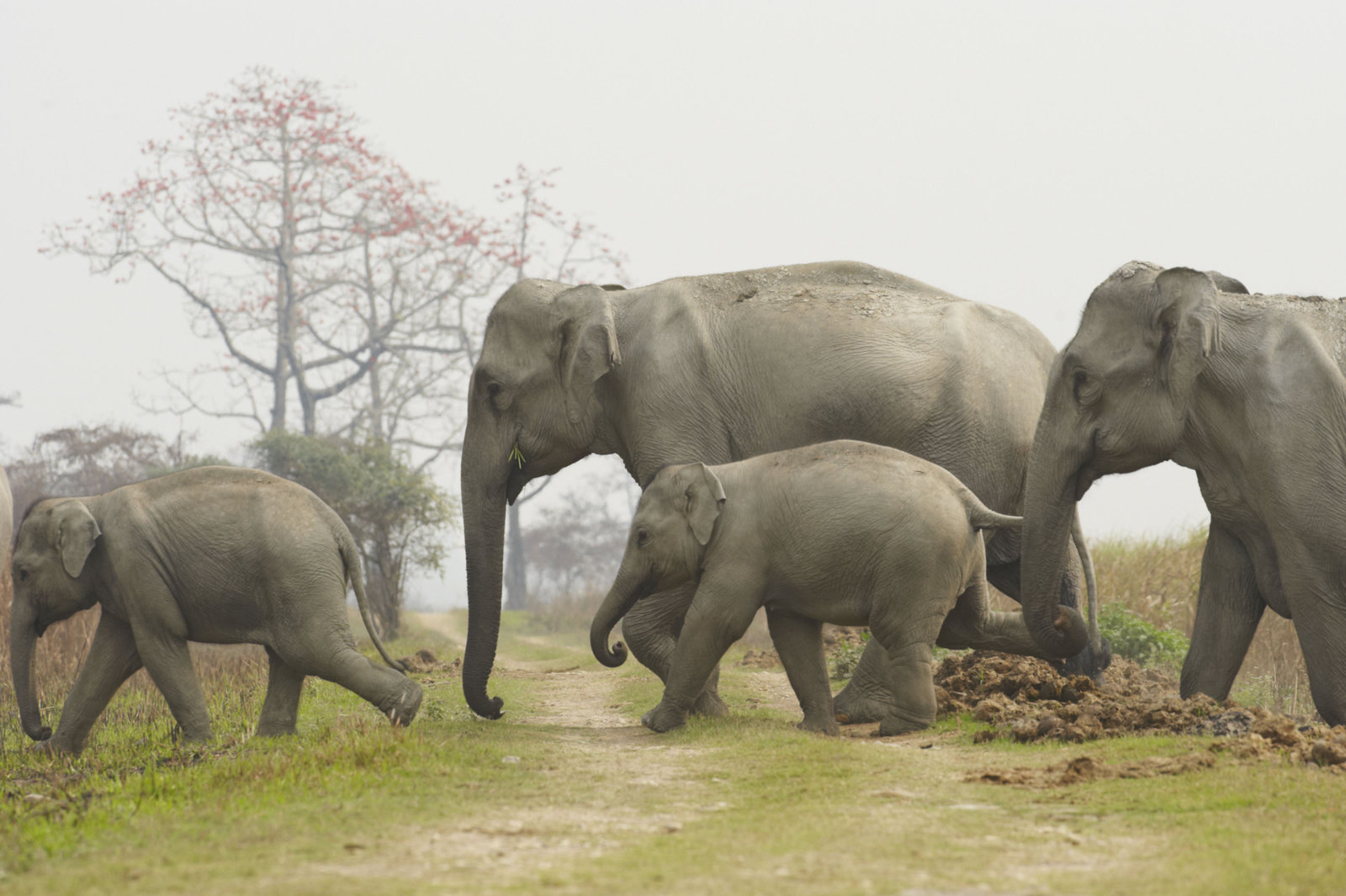
Population
More than 100,000 Asian elephants may have existed at the start of the 20th century, but numbers have fallen by at least 50% over the last three generations, and they are still in decline today.
Elephants used to roam across most of Asia, but now they’re restricted to just 15% of their original range. The Indian elephant has the largest range, while the Sri Lankan is restricted to a few parts of the island. Sumatran elephants were once widespread on Sumatra, but they have lost 70% of their habitat and only survive in fragmented populations.
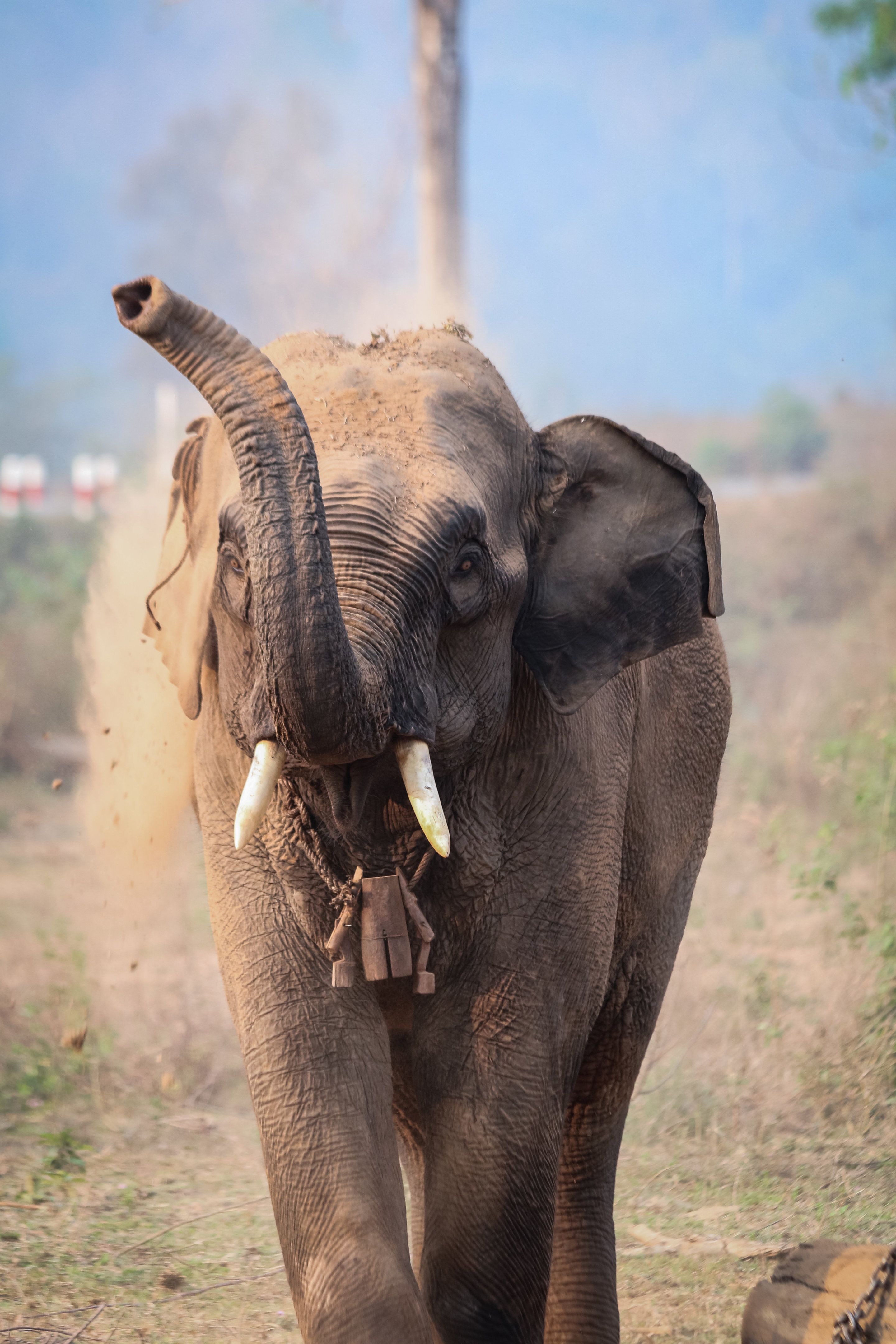
Asia is the world’s most densely populated continent and a huge percentage of the elephants' former range has already been lost. And as the human population continues to grow, the species' remaining habitat is shrinking fast. Large development projects (such as dams, roads, and mines), agricultural plantations and expanding human settlements have also fragmented elephant habitat. Wild elephant populations are now mostly small, isolated and unable to mingle as ancient migratory routes are cut off by human settlements.

Endangered
The largest threats to the Asian elephant are poaching and habitat loss. Their tusks are worth a lot of money on the black market, so large-tusked males are in constant danger of being poached. Elephants are also captured alive for domestic use, such as tourist attractions. Also, as the rainforest they call home are cut down, the closer these elephants must become to humans. They will start feeding on farmers' crops, which puts them at risk of being killed.

